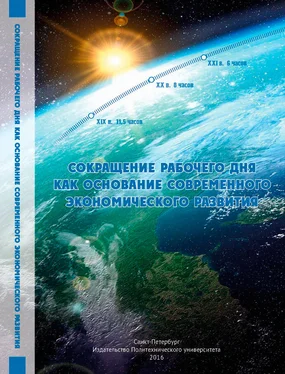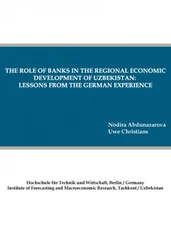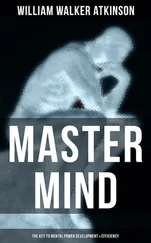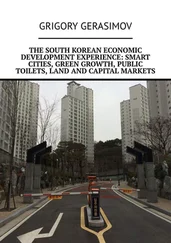Having social modification, nonproductive labour has a need for social regulation, supposes performing definite duties. But, even if it is performed in the production sphere (labour of engineers, technologists, managers and so on), then it does not objectively demand such regulation of actions, as it is for immediate producers, it leaves more opportunities for individual utilization of time. Many kinds of such labour represent applying “abstract knowledge to specific problems” [10], i.e. they possess an essential element of intellectual creative work.
Nonproductive labour does not exclude routine functions of little substance. Particular kinds of it are not very attractive, connected to higher tension of attention or performed in negative conditions for human health.
And yet, in general, labour, not being immediately productive, makes a sphere for realization of many-sided human abilities, it is characterized with an essential range of actions at employees’ own discretion. It makes it more favorable from the point of view of possibilities for human development, as compared to production labour.
Working demands corresponding education. When production turned into technological application of science, learning of fundamentals of scientific knowledge became a necessity for all members of the society. The immediate goal of education is formation and development of human abilities. Accordingly, saving of production labour in a growing volume started to be used for ensuring such development.
A human’s development, as learning achievements of all spheres of the social life by him, becomes his own need. Comprehensiveness of development is ensured with availability of leisure – the time out of fulfilling obligatory social functions, the time for realization of intellectual and other needs for development on an independent choice.
A human life does not come to realization and development of specifically human abilities. Time of satisfaction of physical needs is also an element of a life but it relates neither to time of labour nor to time when human development becomes an end in itself. It does not act as an element of production labour saving. If the whole life of animals is time for satisfaction of physical needs then human’s life comes to those necessary limits that are compatible with domination of specifically social activities. But little children, elderly persons and persons with disabilities are mostly in the hands of physical needs but these needs do not determine the way of life of a social human.
Thus, the activity of the society is objectively divided into time of production labour and time, released from material production for nonproduction labour and other kinds of social activities, immediately directed to development of human abilities. Differentiation of working and free time of the society is adequate in this quality.
Working time is time that the society spends on production of means of production and consumer goods, utilizing forces and laws of the nature in its goals, and, consequently, conforms to the natural necessity.
Free time of the society is time free from productive labour that is intended on formation and realization of creative human abilities, satisfaction of specifically social needs for communication and recognition, it is time that can be generally called free all-round development.
Free time is commonly apprehended as leisure when a person is on his own and doing what he wants. Obviously, this apprehension covers only a part of actual free time – beyond creative labour – and if a person does something promoting his development and not damaging him.
Free time, understood as time for free development of a human when human activities do not have only an instrumental value but are turned into an end in itself, does not actually coincide with leisure. For example, labour of an artist, actor, teacher, etc. is realization and development of creative human abilities and is included into free time of the society according to this criterion. At the same time, at leisure we can see idleness, passivity, realization of bad habits preventing from free development of a human and denying the role of leisure as free time. Paying attention to this side of the matter R. Skidelsky and E. Skidelsky write: “In contemporary parlance, leisure is synonymous with relaxation and rest. Leisure in our sense has no very close connection to leisure as it is generally understood. Paid work could be leisure in our sense if undertaken not primarily as a means to money but for its own sake” [11].
It is obvious that the authors, quoted before, identify, by the essence, leisure with any activities developing human abilities. In our opinion, this understanding of leisure, on one hand, is beyond its understanding as time when a person is on his own, and, on the other hand, it denies unreasonably belonging activities connected to pastime, for example watching TV, to leisure. That is why, in our opinion, it is better not to correlate activity time immediately connected to human development with leisure but to include it into free time of the society. Then free time of the society covers corresponding activities both in the sphere of nonproduction labour and in the sphere of leisure.
Rightness of pooling such labour and leisure into one category of free time of the society, without refusing their differentiation in the frames of the latter, is especially obvious when speaking about the same kind of activities. J. Sallaz, comparing playing basketball by a professional and amateur, notes rightfully: “What is work for one is leisure for the other… One conclusion that we may draw from this comparison is that there is no essential characteristic of any activity that determines its status as “employment”. Rather, it depends on the larger context and processes through which the activity acquires meaning” [12].
The nonproduction sphere of work includes rendering services what usually leads to its identification with the services sphere. In reality, a research officer’s new idea is not a service rendered to somebody. “Servants of the muses” create not services but images exciting hearts and minds of people. Data processing labour is not related to services too. That is why the notion “nonproduction sphere”, to our mind, is more exact than “services sphere” though utilization of the second term dominates in statistics.
Free time of the society is not exhausted by time of labour in the nonproduction sphere. Kinds of activities connected to human development are not limited by fulfilment of creative labour. For example, studies at school or institutes of higher education undoubtedly ensure development of human abilities (if someone does not unreasonably consider labour as any labourious activity). Physical training is very useful for a person but, not becoming a profession, it remains a form of leisure.
When we properly speak about services, i.e., about activities with a positive effect for others, we should take into account all time of reception of respective services by subjects because the time of rendering services by a nonproduction sphere worker does not coincide with all time of reception of a service.
For example, two hours of teaching are equal to two hours of studies for only one pupil (student); total time assigned for studies by the society depends on the quantity of pupils (students). That is why two hours of teaching can ensure 40 hours of studies (if there are 20 pupils (students) in a group). Consequently, time of rendering this service does not fully characterize its quantitative effect; it is necessary to consider the whole volume of time for free development of members of the society thanks to a rendered service.
For example, it would equally be wrong to assess the volume of passenger transport services only on working time of drivers. It is necessary to take into account the time passengers spend on rides. From this point of view, today it is right to calculate transported passengers. However, assessment of the transportation sphere is limited in statistics to either employment in it or to general labour inputs; time that passengers spend on rides is not considered. Drawbacks of the shown methods are overcome with the help of summarizing time of passenger transport workers’ labour and time of passengers’ rides.
Читать дальше












